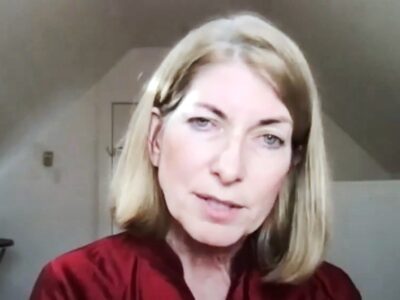Cook County, Illinois
Communities in the Built for Zero Collaborative have seen that improving case conferencing practices drives results, even during a pandemic.
Cook County, Ill., has long been known as a high-achieving and organized improvement team. By spring 2019, however, they hit a plateau — they were attempting changes but not seeing results.
Improving case conferencing is powering a second shift in their veteran by-name list (BFZ Communities can log-in to see this shift). What’s more, their average length of time to housing is down from 174 to 123 days! That’s huge. Here are two case conferencing changes that broke their plateau:
Create a goal path with small monthly steps
The veteran team set aspirational goals, but they experienced a gap in how those goals connect to everyday work. When they began using case conferencing to break down the big goal into small monthly goals, they found a game-changer. They calculated that in order to reduce their BNL from 59 to 35 in six months, accounting for inflow, they would need to house 18 veterans per month. From there, at each case conferencing meeting they identified 18 veterans for whom they could set a target move-in date within one month. Searching for this month’s 18 likely housing placements — at each meeting! — brought their goal from abstraction to reality. Each case manager saw their contribution to the big goal.
“The crisis has caused us to look at veteran homelessness with more urgency, not less.”
Erin mangano
Creating shared purpose with frontline staff
Once everyone on your team believes in the goal, they can spot new opportunities to reach it. “We couldn’t have implemented this level of work if our staff didn’t know what we were doing it for,” explains team co-lead Erin Mangano. “Having real conversations with our HUD-VASH staff about how housing a veteran in July contributes to us reaching a shift in December was crucial in gaining buy-in and creating excitement around the work.” Use some case conferencing time to ask your team what they’d like to accomplish through the meeting, and share your vision, too. In subsequent meetings, set aside a few minutes of the agenda to revisit these objectives, update them, and check in on progress.
Despite increased inflow caused by COVID-19, the team plans to reduce veteran homelessness all the way down to functional zero. Team co-lead Kerry Thomas explained, “We realized that we need to increase our capacity to house people monthly as we encounter new veterans due to the pandemic. We’re continuing to hold our numbers below the median, and we’re on our way to a second data shift due to these efforts. The crisis has caused us to look at veteran homelessness with more urgency, not less.”

The team emphasizes that having the right mindset for the work has been essential. “It’s so easy to get stuck focusing on parts of the system we can’t change, but we have to be courageous and look at what we can accomplish with what we do have,” adds Erin.
“You can get to measurable reductions, even if you have technical or resource barriers. We’ve seen it happen.”




